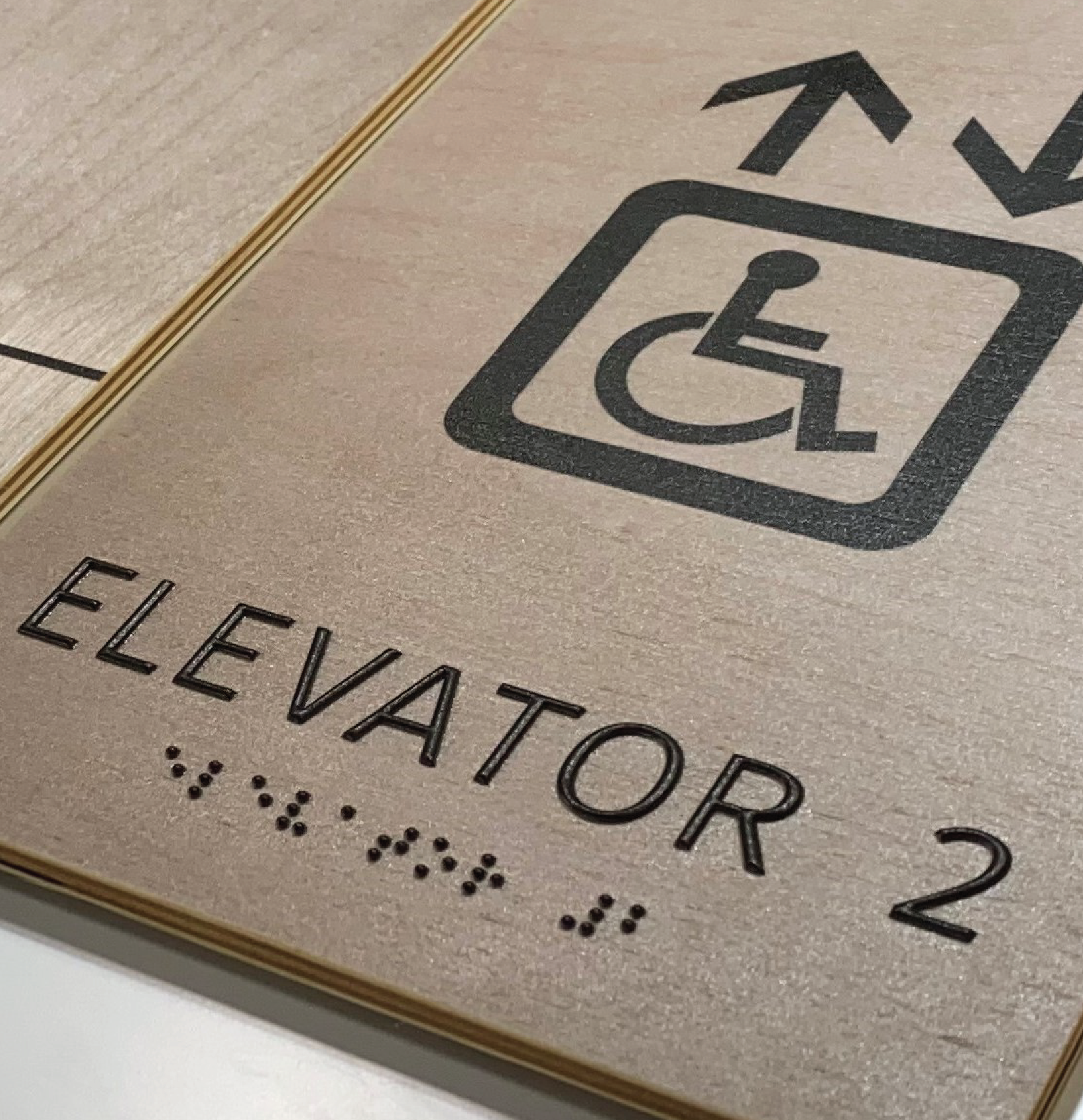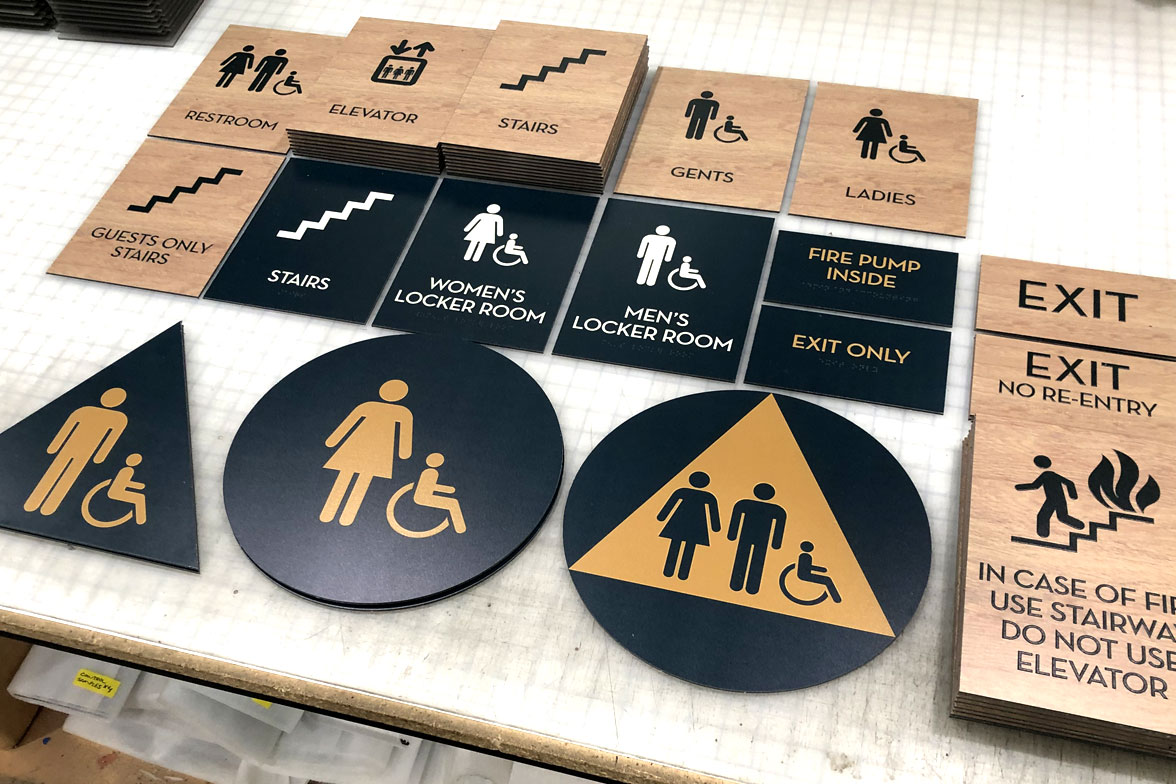Exactly How ADA Signs Enhance Accessibility for Everyone
Exactly How ADA Signs Enhance Accessibility for Everyone
Blog Article
Checking Out the Key Features of ADA Signs for Enhanced Accessibility
In the world of availability, ADA indicators serve as quiet yet powerful allies, guaranteeing that rooms are comprehensive and navigable for people with disabilities. By incorporating Braille and responsive elements, these indications damage barriers for the visually damaged, while high-contrast shade schemes and readable typefaces cater to diverse aesthetic demands.
Significance of ADA Conformity
Ensuring compliance with the Americans with Disabilities Act (ADA) is essential for promoting inclusivity and equivalent access in public spaces and work environments. The ADA, established in 1990, mandates that all public facilities, employers, and transportation services fit people with disabilities, ensuring they delight in the exact same civil liberties and opportunities as others. Compliance with ADA standards not only satisfies lawful commitments yet additionally enhances an organization's credibility by demonstrating its commitment to diversity and inclusivity.
One of the crucial elements of ADA conformity is the application of obtainable signs. ADA indicators are made to guarantee that individuals with disabilities can easily browse through rooms and structures. These indications need to comply with certain standards relating to dimension, font style, color contrast, and placement to assure presence and readability for all. Effectively implemented ADA signs aids get rid of barriers that people with specials needs usually encounter, therefore advertising their self-reliance and confidence (ADA Signs).
Moreover, sticking to ADA policies can mitigate the threat of legal repercussions and possible fines. Organizations that fall short to comply with ADA standards may encounter claims or penalties, which can be both financially challenging and harmful to their public picture. Thus, ADA conformity is essential to fostering a fair environment for everybody.
Braille and Tactile Aspects
The consolidation of Braille and responsive aspects into ADA signage symbolizes the principles of access and inclusivity. These features are vital for people that are aesthetically impaired or blind, allowing them to browse public areas with better freedom and self-confidence. Braille, a tactile writing system, is essential in offering created information in a style that can be conveniently regarded through touch. It is normally positioned beneath the matching message on signs to ensure that individuals can access the info without aesthetic assistance.
Responsive aspects prolong beyond Braille and include raised characters and icons. These elements are developed to be discernible by touch, allowing people to determine space numbers, washrooms, exits, and other critical locations. The ADA establishes certain guidelines concerning the size, spacing, and positioning of these responsive components to maximize readability and ensure uniformity throughout different atmospheres.

High-Contrast Color Pattern
High-contrast color pattern play a critical role in boosting the visibility and readability of ADA signs for individuals with aesthetic disabilities. These schemes are important as they make best use of the difference in light reflectance in between message and background, making certain that indications are easily noticeable, even from a distance. The Americans with Disabilities Act (ADA) mandates making use of certain color contrasts to fit those with minimal vision, making it a vital aspect of conformity.
The efficiency of high-contrast colors depends on their ability to stick out in numerous lighting problems, including poorly lit settings and areas with glow. Typically, dark message on a light history or light message on a dark background is used to attain optimum contrast. For example, black text on a yellow or white background supplies a raw visual distinction that assists in fast recognition and comprehension.

Legible Fonts and Text Dimension
When thinking about the layout of ADA signs, the option of readable font styles and proper text size can not be overstated. These components are vital for guaranteeing that indications come to people with visual problems. The Americans with Disabilities Act (ADA) mandates that fonts need to be not italic and sans-serif, oblique, script, very decorative, or of unusual form. These needs help ensure that the message is conveniently legible from a range which get more the personalities are appreciable to diverse audiences.
According to ADA standards, the minimal text elevation must be 5/8 inch, and it should raise proportionally with checking out distance. Uniformity in message size contributes to a natural visual experience, assisting people in browsing settings efficiently.
Additionally, spacing in between letters and lines is essential to readability. Sufficient spacing avoids personalities from appearing crowded, improving readability. By adhering to these requirements, developers can substantially enhance ease of access, guaranteeing that signs offers its desired function for all individuals, regardless of their aesthetic capabilities.
Efficient Positioning Methods
Strategic positioning of ADA signs is crucial for making the most of access and guaranteeing compliance with lawful standards. Properly located indicators direct people with disabilities efficiently, assisting in navigating in public spaces. Secret factors to consider consist of height, presence, and closeness. ADA standards specify that indicators should be mounted at an elevation in between 48 to 60 inches from the ground to ensure they are within the line of sight for both standing and seated individuals. This typical elevation array is essential for inclusivity, enabling wheelchair individuals and individuals of varying elevations to accessibility information effortlessly.
Additionally, indicators have to be placed surrounding to the lock side of doors to enable easy identification before access. Consistency in indicator placement throughout a center enhances predictability, reducing confusion and enhancing total individual experience.

Conclusion
ADA indications play an essential role in advertising accessibility by incorporating features that deal with the demands of individuals with impairments. Integrating Braille and responsive elements makes sure critical information is easily accessible to the aesthetically impaired, while high-contrast color design and legible sans-serif fonts improve exposure throughout numerous illumination conditions. Effective placement techniques, such as ideal installing elevations and strategic locations, even more help with navigation. These aspects jointly cultivate a comprehensive setting, emphasizing the importance of ADA compliance in ensuring equal gain access to for all. try this out
In the realm of accessibility, ADA indicators offer as silent yet powerful allies, ensuring that rooms are accessible and inclusive for people with impairments. The ADA, enacted in 1990, mandates that all public centers, companies, and transportation services suit individuals with disabilities, website here guaranteeing they appreciate the exact same rights and possibilities as others. ADA Signs. ADA indicators are developed to guarantee that individuals with impairments can easily browse via buildings and spaces. ADA standards state that signs need to be installed at a height in between 48 to 60 inches from the ground to ensure they are within the line of view for both standing and seated people.ADA indications play a vital duty in advertising ease of access by integrating attributes that resolve the demands of individuals with disabilities
Report this page